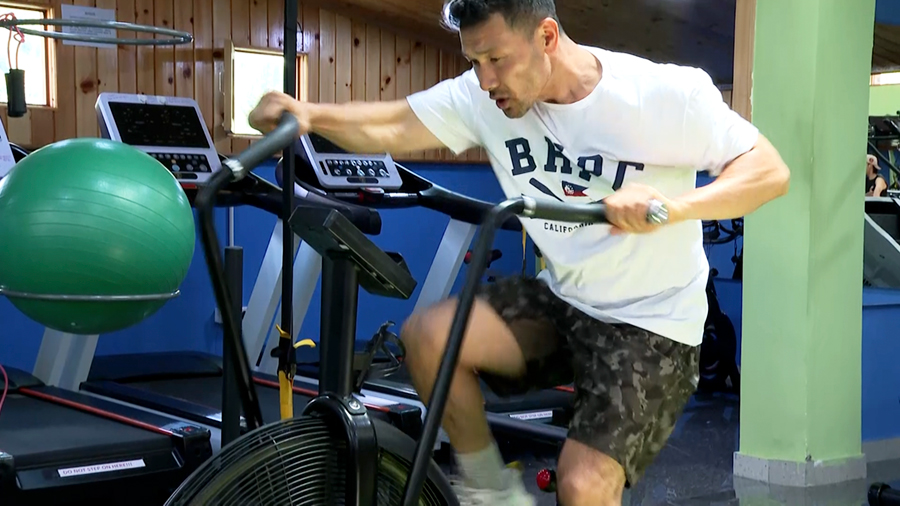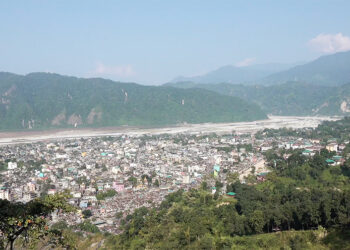
Regular physical activity is proven to help prevent and manage non-communicable diseases such as heart disease, hypertension, stroke, diabetes, and several cancers. However, more Bhutanese aged 15 to 69 years are becoming less active. A recent National Health Survey shows that the percentage of Bhutanese not getting enough physical activity has tripled since 2014. According to the World Health Organisation, lack of physical activity is one of the leading risk factors for non-communicable diseases and deaths worldwide.
The WHO recommends that adults engage in two and a half hours of moderate-intensity or one to two hours of vigorous-intensity physical activity every week.
For children and adolescents, at least an average of 60 minutes a day of moderate-to vigorous-intensity physical activity is advised.
According to the National Health Survey, urban residents are more likely to fall below the recommended activity levels compared to those in rural areas.
A physiotherapist from the National Referral Hospital said that regular exercise can naturally prevent diseases.
“Diabetes is also prevalent these days. Normally, breaking down the sugar is hard but with exercise, the capacity to break down sugar also increases. Regular exercise helps the body process sugar better and can take in more insulin. By exercising more, you can prevent insulin resistance,” said Tshering Penjor, a senior physiotherapist at JDWNRH.
Physical activity can be categorised into high, moderate, and low intensity.
Low-intensity exercise has minimal health benefits, unlike 10 to 20 minutes of moderate-intensity exercise such as brisk walking or high-intensity exercise such as jogging, running, swimming, or cycling each day.
A physical instructor from DeSuung added that exercise can also be categorised as aerobic and anaerobic.
“Firstly, aerobic exercise requires increased oxygen intake. For example, long-distance running. Anaerobic exercise, on the other hand, occurs without oxygen, like sprinting short distances while holding your breath for a few seconds,” said Tenzin Duba, an instructor at Desung Skilling Programme.
Meanwhile, talking to BBS, people said that finding time for proper exercise is difficult, especially for those who work.
”I try as much as possible to exercise regularly but I do not get time. By the time I get home, it is usually late. But if it is not too dark, there is a pathway from my home where I sometimes go for a workout,” said Dorji Wangmo, a resident in Thimphu.
“When it comes to exercise, a lot of people say that they do not have time. I understand because I also served as a civil servant for 20 years and I could not put that much effort into exercising. However, that is not right because being healthy contributes to being productive at work,” said Tshering Wangmo, a gym goer.
 Nevertheless, gym attendance is rising, particularly in urban areas. According to a gym trainer, the busiest times at gyms are from 5 to 8 in the morning and again from 5 to 9 after office hours.
Nevertheless, gym attendance is rising, particularly in urban areas. According to a gym trainer, the busiest times at gyms are from 5 to 8 in the morning and again from 5 to 9 after office hours.
“Everyone says that they cannot find time and just like that their lives pass by. People need to make time and if you can manage your time properly then you will have time,” said Gyaltshen Wangdi, a trainer at Rooftop Gym.
Meanwhile, the health ministry has trained over 400 individuals in Sorig Zhiney and Luejong, which are exercises for the mind and body.
“In physical exercise, there are three parts. One is for mental problems or improving mental health, and the second is for normal people to prevent diseases. The third one is for the people who have ailments or diseases, which according to our Sorig Zhiney Luejong trainers, teaches physical exercise to the clients or the patients,” said Tandin Chogyel, a programme analyst at Traditional Medicine Division, MoH.
A person can also practise the exercises at home by referring to the instructional videos available on the health ministry’s Facebook page and YouTube channel.
According to the latest data from the WHO, nearly 1.8 billion people globally are at risk of diseases due to insufficient physical activity.
The WHO says that being physically inactive increases the risk of death by 20 to 30 per cent compared to those who are physically active.
Singye Dema & Tenzin Loday Gyeltshen
Edited by Sonam Pem










